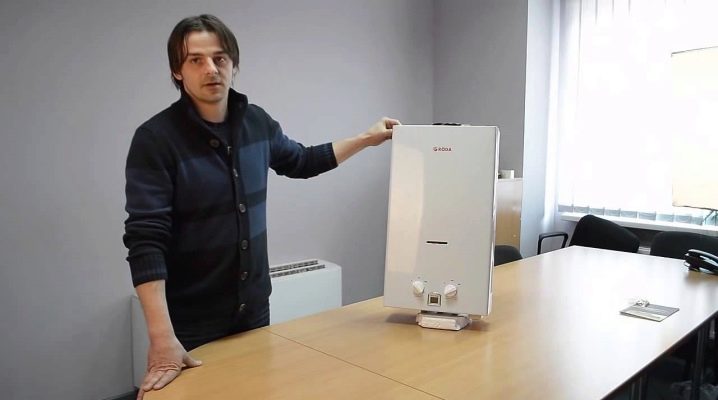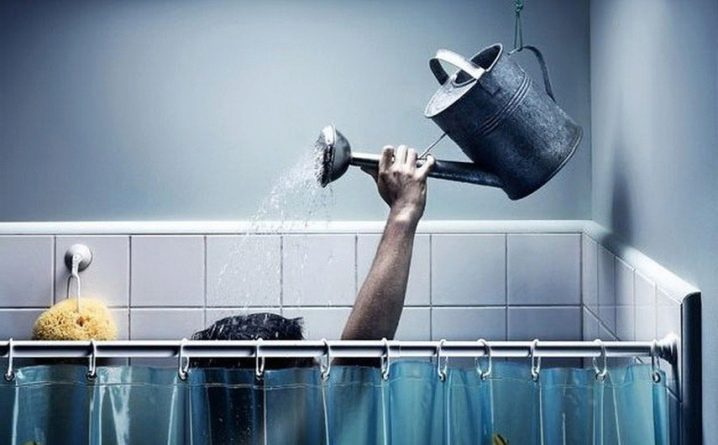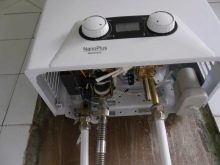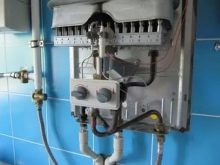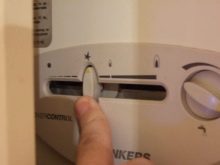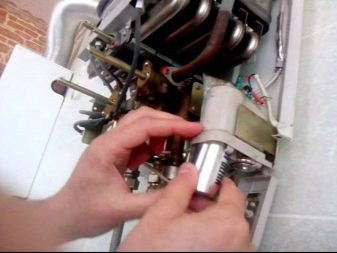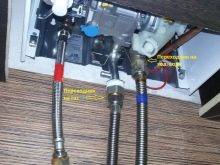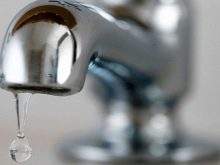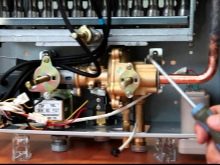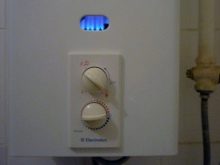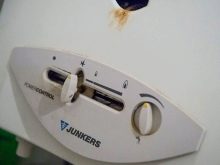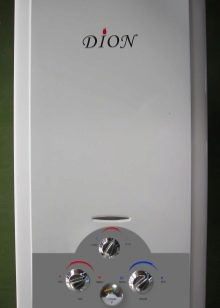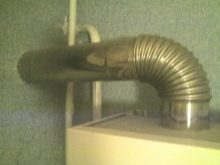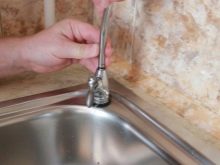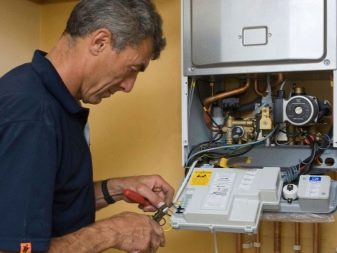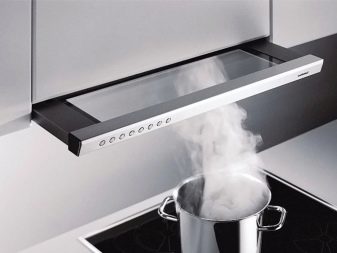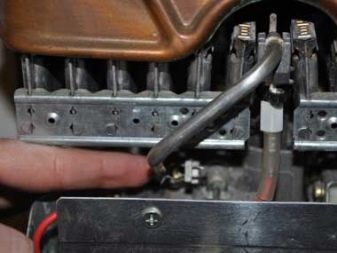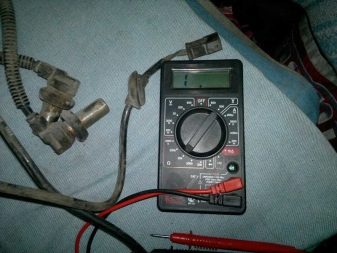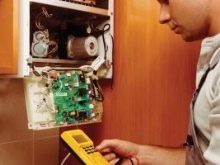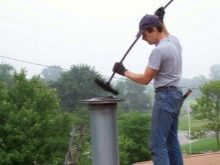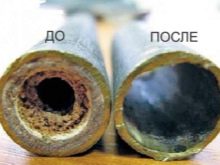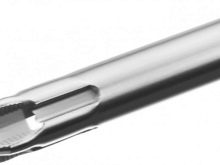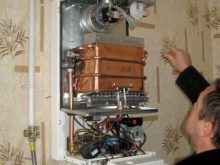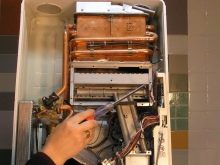Why does not the gas column ignite?
Many factors affect the serviceability of a column, although it would seem that it itself is arranged rather primitively. And the option to remain without hot water immediately becomes the number one problem. Therefore, if the column has stopped working, it is important to establish the exact cause before undertaking repairs.
The reasons
It is worth considering that the damage may be of a very different nature. For example:
- the flame did not light up (it clicks, there is a spark, but it does not work or there is no reaction to the inclusion at all);
- goes out immediately or after a short time (both with automatic and manual ignition);
- the fire goes out when you try to turn on the water, increase the pressure or weaken it;
- the flame is lit, the water goes a little warm, and then the column goes out;
- column bangs, cracks, mini-explosions appear when turned on;
- piezo ignition does not work;
- the piezo constantly works, but when igniting the flame goes out;
- the automatic column does not burn, while there is a smell of gas;
- when the valve is opened, the GSV rod does not move.
Malfunctions of the column can be divided into breakdowns due to external factors and of a purely internal nature. The former are not related to the parts inside the unit itself and depend on additional details or external influences (for example, adding temperature).
The latter occur in case of junk or clogged part of the equipment inside the device itself.
External factors
External damage are as follows.
- The most common situation is no traction in the chimney column. If it is not cleaned, it will become clogged with dust and dirt, and the combustion products will not find a discharge and extinguish the burner. Then, when the security system is triggered, the gas supply will be cut off.
- In the chimney could accidentally be foreign object.
- The unit could just run out of battery or batteries. This type of malfunction exists only in the presence of ignition, which automatically acts on batteries.
- If the device does not work, after the first installation or because of repairs to the plumbing system, then there is a high probability that the hot water supply line was just plugged in the wrong place.
- Reduced tap pressure. It is necessary to assess the water pressure (it will be weakened, the water will flow in a thin stream). Ignition will stop working at low pressure, so the reason is no longer in the column, but in water pipes. Although it is likely that the filter itself, installed in front of the column, is somehow clogged.
- Faulty mixer, adding too much cold water, so the water in the column itself becomes too hot and quenches it.
- Electronics. In modern columns there is a large number of control modules and sensors that control the operation of the entire unit. Their failures can lead to the fact that gas will stop igniting.
Internal breakdowns
Internal factors are like this.
- Incorrectly configured water heater. Because of the change of seasons, the water temperature also changes, so the column needs to be regulated, which is often forgotten.
- The membrane on the water node is out of order. If the membrane is many years old, then it could lose elasticity, crack, deform, and become covered with lime deposits.
- Blockage filters or heat exchanger with soot and scale.
- The pilot or main burner was clogged with dirt.
- Problems with gas outlet sensor.
- Claps or small explosions when you try to turn on the equipment, it may happen due to insufficient thrust in the ventilation or blockages of different parts of the water heater.
A separate cause of the malfunction may be only that when turned on, the ignition button is not fully held. It must be held for about 20 seconds, otherwise it will go out.
Typical breakdowns
Problems can be different for units of different manufacturers, many of which are characterized by the presence of certain faults that appear over time.
- "Aster" - does not turn on or turn on from several attempts, if the flow of cold water is not precisely adjusted. The valve itself unit fails regularly. In this case, almost everyone who purchased this column indicates that the main drawback is the lack of automatic ignition, which makes it necessary to keep the igniter on, which quickly stops working if touched or moved.
- "Ariston" - the water block breaks, the membrane is easily deformed. Customer reviews are mostly positive, people note that the column ignites quietly, maintains temperature well and has an affordable price category, and is also easily managed.
- "Oasis" - a faulty burner that needs to be replaced frequently, membrane deformations. Buyers are attracted by the price and design, but otherwise they often say that the device quickly breaks down, the batteries fail, the column itself almost does not heat the water and requires frequent replacement of the water filter.
- "Amina" - several times it lights up and turns off before heating, the batteries quickly sit down. Users note a combination of low prices and good quality speakers, but they are not satisfied with the fact that they often replace batteries. As a plus, they also note the presence of a special display that displays the temperature.
- "Russian M" - often failing valve block, quick clogging of the filter system. Reviews show that the column slowly lights up at a low water pressure, the temperature of the liquid itself jumps when the tap is switched to the shower, and the device quickly goes out.
- "Dion" - the body of the heat exchanger burns through.There are almost no negative reviews, customers are satisfied with the simplicity and ease of use, column design, security system and the fact that the unit can work for a long time.
It can be concluded that any gas water heater has its drawbacks associated with its different parts, poor quality manufacturing, the manufacturer’s own negligence and other reasons. Before buying it is best to consult with experts or craftsmen.
Some models, according to user feedback, may not only fail frequently, but also carry a serious threat to life, so it’s worth weighing all the pros and cons.
Repairs
Replacing one or more parts is necessary to replace parts that have outlived their usefulness. Membranes, filters, batteries, you can safely change yourself, without referring to the repairman. It is worth remembering that batteries and rechargeable batteries, although they should serve a year or more, often break much faster. Stem immobility indicates membrane breakage.
A large amount of air can accumulate in the gas pipeline or gas fittings, which does not allow for normal ignition of the burner.If you hear a crash and whistle from the nozzle - you need to unscrew the nut that secures the gas pipes to the valve, ignition is clamped and held until the characteristic smell of gas, which means full oxygen output and readiness for operation.
The question with a weak pressure of water can be solved by calling the public service and finding out why there is no normal one. Mixer purification filters need to be cleaned or completely replaced; you can also leave an application to the special services for washing the pipes. Clogged and littered with lime setting places, too, can be removed without the help of a specialist.
Soot is convenient to clean with a vacuum cleaner, and for cleaning scale you need to buy liquid for gas water heaters, which is sold in specialized stores.
The mesh filter, which is equipped with a node for receiving water, is often clogged with rust or sediment from the water entering it. For cleaning you need to remove it from the column. Sometimes the usual washing under the tap is enough, but if the membrane is damaged, then it is worth changing. It is best to replace it with a piece of silicone, as it will last much longer. To flush the column from scale, it is worthwhile to assemble the appropriate set of tools for the job - an adjustable wrench, a pipe wrench, several screwdrivers of various types, a rubber hose,on which there is a metal clamp, a special anti-scale agent, a basin or a bucket.
Preparation for work on descaling is as follows:
- carefully remove accessories, handles, and other parts from the case;
- shut off the inlet water supply, then open any hot water tap at home;
- unscrew the feed tube of the heat exchanger and take it to the side.
When the nut is unscrewed from the heat exchanger, the water will leave, which means that the valve is open. It is necessary to drain about a liter of water, then put a hose on the heat exchanger (its inlet), insert a funnel there and gradually pour in liquid to remove scale. The work must be carried out with gloves and goggles, as the solution contains hydrochloric acid, which, if careless, can threaten serious burns.
If the gas was not turned off before starting work (it is not necessary to turn it off), it is possible to slowly and gradually heat the solution against scale, so that it acts faster; without heating, the cleaning time is approximately two hours. After that, a basin is placed under the faucet to see what comes out. The output of a large amount of slag with a reinforced head means that the cleaning is successful.If this does not happen, it is worth repeating the washing.
You can perform cleaning and improvised means like citric acid. The problem is that in addition to the heat exchanger in the heater there are other parts that are easily spoiled, for example, a gearbox made of copper.
Therefore, when using a homemade cleaning solution, you should remove the part and clean it separately.
Work sensors protection
Whether the gas sensor is working can be found by connecting its terminals together. If the resistance equals infinity - everything is fine, if not - a replacement is necessary. With the continuous operation of the protective relay, the gas water heater goes out almost after switching on, and there are two options. Temporary, consisting in the constant opening of windows to reduce overheating, and radical, which consists in simply replacing the relay with a less sensitive one.
Also, the reaction of the sensor can mean that the chimney is clogged with something, and then it is better to inspect the latter, since if the gases are removed poorly, this may entail poisoning of the body. In addition, it is worth knowing whether the neighbors have installed a satellite dish on the chimney.It makes it difficult to work, and therefore the installation of foreign equipment in principle is prohibited. Poor waste of gases can be associated with a powerful exhaust hood installed in the kitchen, forcing the gas to leave not in the way that is needed, but through the room.
These devices are also not allowed to be installed in the same room with the column.
Lack of fire
To determine the reason why there is no flame in the wick, the following procedure.
- Open the front panel.
- Check the tube through which the gas passes for defects, clean the igniter from soot.
- Inspect the speaker wires for defects, dirt, oxidation.
- To inspect the heat generator, you need to remove the plug of the electric valve, check with a voltmeter (before this, heat one of the ends of the thermocouple with a lighter), if the readings are around 15-30 mV, then the part works and does not need to be replaced.
- Understand the serviceability of the sensors using a tester, and if its value is above zero, then a replacement is needed.
- Conduct research on the induction valve coil. Insert the test probe into the connector, which is free after checking the heat source. Put it in the middle.We put the second end on the case and check with the tester in ohmmeter mode. If the coil resistance is in the range of about 10-15 ohms, then there is no problem.
- The health of the monitoring sensors is determined by a multimeter (diode test mode). The sensor outputs are checked; if it is in good condition, the indicator will be zero. Otherwise, you need to replace the sensor.
- Check wires and connections. Microcracks may occur at the solder point of the wire and sensor, leading to problems with ignition.
- Microexplosions are eliminated by cleaning the chimney, replacing the battery, battery, and then contacting the public service to call the chimney sweepers.
In other situations, it is best to call the craftsmen, who will perform a more thorough inspection and will be able to make repairs efficiently, replacing broken parts and reconnecting the hot water line or clearing complicated clogs with special equipment. It is important to remember that it is necessary to apply only to certified companies or directly to the employees of Gorgaz.
Calling unqualified "private workers" can lead to even greater problems or the detection of non-existent breakdowns, which will significantly increase the cost of repairs.
Prevention
So that you don’t have to mess with the unit too often or constantly call repair service, The following rules should be followed.
- To set the temperature at an optimal level so that there is no need to dilute the water, then scale will not appear so quickly. In order not to have to adjust the column every season, it is preferable to choose a model that memorizes the settings for the winter and summer modes.
- To remove salts from water with high rigidity, you can install an electromagnetic system that will clean the liquid.
- Regular cleaning of the chimney and parts of the water heating system is necessary.
- Modern speakers, which have an integrated electronic controller, it is better to connect to the network through a stabilizer and not disconnect at night.
- If the hose length exceeds 3 meters, then the pressure during the gas supply will greatly decrease.
- When working the column, it is better to open the window, such an easy way will allow to get a lot of air for the normal functioning of the unit.
- Chimney and quickly dusty parts of the column should be periodically checked for the presence of dirt, cobwebs and similar things and get rid of them with brushes and a vacuum cleaner.
Signs that unscheduled preventive maintenance and technical inspection from a specialist were required:
- the pressure in the pipeline is normal, but the heat exchanger still works a small amount of time;
- the unit is constantly turned off or does not function in principle, although the flow of gas and water is carried out optimally;
- thermal protection often triggers for no reason, provoking shutdown of the working system;
- water heating is reduced, although there are no noticeable violations of the work.
To check the column from the inside, you need to remove the upper case. This is done with the help of a Phillips screwdriver, which unscrews the screw located on the handle securing the gas lock valve. The handle itself is removed by pulling on itself. Then, using a flat screwdriver, remove the screws for fastening the case, after which it can be removed.
The main tasks in routine maintenance are to check the overall performance, inspect the column inside and outside to find out the places that need to be cleaned of dust and dirt, and accurately assess the condition of the heat exchanger.
Periodic preventive measures and checks allow to increase the life of the device due to the timely identification of problems in the functioning of the column.The works themselves should usually be carried out once a year, but if the column is already old and often spoils, then if it is impossible to replace it, it is worthwhile to check it more often. It is better to trust annual inspection to professionals from specialized gas services, as they will be able to accurately determine the condition of the unit. Quality maintenance usually includes a complete analysis of all equipment, the search for defects and areas with damage that can cause disruptions in the column. It also carries out cleaning of each main part (wet and dry cleaning), regulation of all components of the gas water heater or driving them to their original position, reverse connection and testing the readiness for operation.
The main malfunctions of gas heaters are in the next video.
